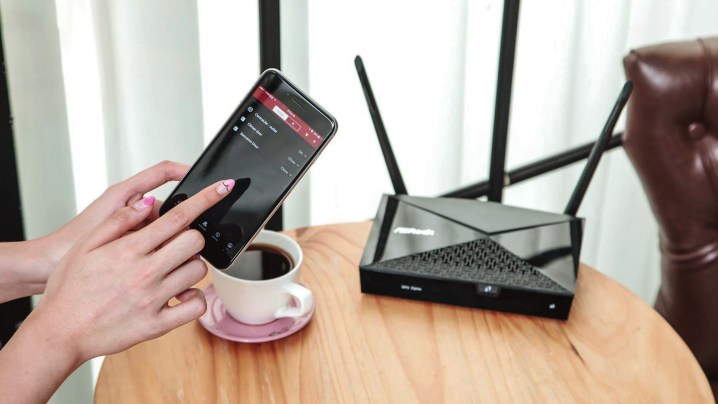Thanks to a unanimous Federal Communications Commission (FCC) vote today, your Wi-Fi network could become faster and more reliable. The FCC‘s vote opens up 1,200 MHz of the 6 GHz band for unlicensed use, which means that this spectrum will join the existing 2.4 GHz and 5 GHz bands found on most home Wi-Fi routers today. The standard, called Wi-Fi 6E, will free up unlicensed 6 GHz spectrum for use on Wi-Fi later this year, so your network will become less congested and you’ll enjoy faster speeds.
In order to take advantage of the new spectrum and faster speeds, you’ll definitely need a new Wi-Fi 6E-compatible device and router. These devices are expected to hit shelves toward the end of this year, and you can expect to see a lot more devices taking advantage of the 6GHz spectrum in 2021. Once Wi-Fi 6E devices hit the market, you’ll have to look out for the label, as current devices marked as Wi-Fi 6 compatible won’t be able to take advantage of the newly available spectrum. Also, your speeds will be as good as what’s available to you from your internet speed provider, so you may want to upgrade to a faster home broadband plan.
The 6 GHz band is currently used to support utilities and public safety backhaul, and the FCC’s vote opens this spectrum to Wi-Fi networks. The band provides twice as much bandwidth as the existing 5 GHz spectrum in use today, and latency will be significantly lower, as there aren’t any legacy devices on that spectrum.

“Today, the Federal Communications Commission made a historic and visionary decision that will transform wireless connectivity for decades to come,” the Wi-Fi Alliance said. “By making 1200 megahertz of spectrum in 6 GHz available for unlicensed innovation, the Commission opened the flood gates of Wi-Fi benefits for American consumers, enterprises, and the economy. Most importantly, the FCC decision ensures that Wi-Fi users can stay connected to colleagues and family, and to healthcare, business, education, and other critical services.”
Wi-Fi 6E works similarly to Wi-Fi 6 on 5GHz today, but the implementation comes with non-overlapping channels, meaning you’ll get 14 additional 80 MHz channels and 7 additional 160 MHz channels. This means you’ll have to once again upgrade to Wi-Fi 6E — even if you recently made the jump to Wi-Fi 6 — if you want to take advantage of the extra bandwidth made available by the 6 GHz band. The good news is that any device labeled as Wi-Fi 6E-compliant will be backward compatible with older Wi-Fi routers, but you won’t gain any of the advantages from the 6 GHz band.
Wireless chip manufacturer Broadcom already has a Wi-Fi 6E radio, and both Intel and Qualcomm have committed to supporting the 6 GHz spectrum with their own chipsets. “This is the most substantive decision anycommission has made on unlicensed spectrum in almost 25 years, and one that will empower our wireless experiences for the next 20 years,” said Vijay Nagarajan, vice president of marketing for wireless communications and connectivity at Broadcom.
With Qualcomm’s backing, we will likely see smartphones as some of the first consumer devices to support Wi-Fi 6E, following a similar path to how Samsung’s Galaxy S10 phones were among the first devices to support Wi-Fi 6. And with Apple’s support of the new standard, we can expect Wi-Fi 6E support in future generations of the MacBook series, iPad, iPhone, Mac, iMac, Apple TV, and Apple Watch. Following phone adoption of Wi-Fi 6E, IDC analyst Phil Solis told The Verge that he expects TVs will add this feature in 2022.
Though the FCC has decided to open up the 6GHz spectrum in the United States, other countries will need to do the same for Wi-Fi 6E to see global adoption. Still, Wi-Fi 6E marks an important milestone in Wi-Fi’s history. The standard’s ability to improve the reliability of connections will be a boon for gamers, especially with cloud gaming services on the rise. And with more people taking advantage of work-from-home opportunities in recent months, having more bandwidth to get a faster, more reliable connection with lower latency to your home network will be a big win for consumers in the long run.


